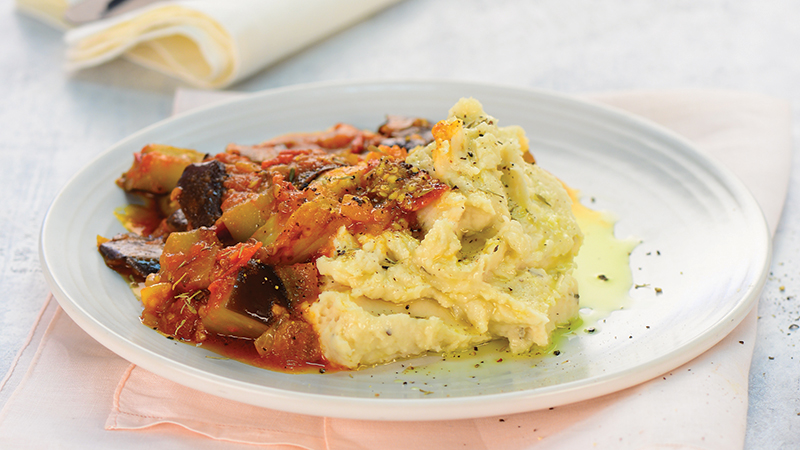Potato swaps
May 31, 2017

Just how healthy potato is for you depends on how you prepare and eat it.
Why potato is good
Often lumped with sugar, white flour and white rice, this humble vegetable is not a refined food. It actually contains significant nutrients, including fibre, potassium, vitamin C and magnesium.
Further, potatoes are high in antioxidants, particularly the purple- and red-skinned varieties. Although dark green leafy vegetables have the highest nutrient scores, potatoes offer one of the best nutritional values for money.
However, most potato varieties fall in the medium to high Glycaemic Index (GI) range. The GI is a measure of how quickly your blood sugar is raised—the lower the better—so how you prepare and serve potato is important.
How to make it healthier
- Don’t mash potato—breaking down cell walls significantly raises the GI.
- Eat it with the skin, which contains a variety of antioxidants even if not brightly coloured.
- Enjoy it cold with a healthy dressing—think potato salad. Cooking then refrigerating your potato can drop its GI by 26 per cent. But adding extra virgin olive oil and vinegar or lemon juice lowers the GI by 43 per cent compared to serving plain boiled potatoes hot.
- When roasting, minimise browning to reduce harmful chemicals such as acrylamide and advanced glycated end products forming. Instead of hot chips enjoy them roasted and seasoned with lemon.
Potato swaps
For more variety or even lower GI choices, try the following:
- butter bean and thyme mash (see recipe below)
- creamy cauliflower mash
- new potatoes (baby potatoes)
- waxy varieties such as carisma, nicola, nadine, all tested and shown to have a low GI value.
Butter bean and thyme mash
A delicious alternative to mashed potato, butter beans (also known as lima beans) have a buttery flavour and a smooth, starchy texture. They also drop the GI of the entire meal and control blood sugar levels.
Preparation time: 6 mins • Cooking time: 24 mins • Serves: 8
Ingredients
- 500 g butter beans (lima beans), soaked overnight in water
- 1 tbsp extra virgin olive oil
- 1 tsp dried thyme
- 1 tsp salt
Method
- Rinse and drain beans. (You can remove skins that float to the top, otherwise they will blend in food processor after cooking.)
- Place in a pot, together with the thyme and at least 1.5 litres of water. Cover with lid and bring to the boil. Cook 45-60 mins until beans are tender but not overcooked. Add extra boiling water if required so beans don’t burn. (Butter beans take just 3 minutes to cook in a pressure cooker. Allow 15 minutes sitting time after cooking for natural pressure release. Add the thyme when puréeing to prevent blocking pressure cooker valve.)
- Remove beans from the stove and strain in colander.
- Transfer beans to food processor and add remaining ingredients; process until smooth and creamy. Serve immediately or chill for later use.
Tips
- For an instant version: Use 2 x 400 g cans of butter beans. Rinse, drain, then add 1 tsp dried thyme, pinch of salt, 1 tbsp extra virgin olive oil and 4 tbsp hot water from the kettle and puree until smooth.
- For a variation, mix through a small amount of warmed olive oil, to which you have added finely chopped garlic and fresh rosemary. You can also add a little lemon juice.
PER SERVE: Energy 1072 kJ (256 cal). Fat 15 g. Protein 20 g. Saturated fat 2 g. Carbohydrate 8 g. Fibre 13 g. Cholesterol 0 mg. Calcium 116 mg. Iron 6.1 mg. Sodium 290 mg.













